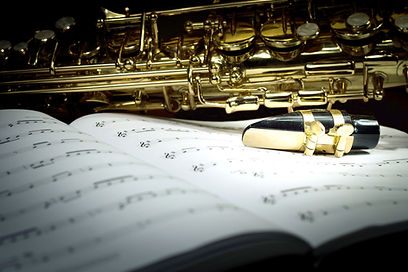

Learn with Mando
Frequently Asked Lesson Questions
Q: Do I Need Prior Music Experience to Take Lessons?
A: No! While some past experience in music and/or playing an instrument can help learn a new one, it is not required. Many people begin with no prior music experience whatsoever.
Q: How much do lessons with you cost?
A: Contact me directly for lesson rates, schedule, and offers!
Q: What is the typical age for beginning a woodwind instrument?
A: The youngest age for beginning a woodwind instrument is typically around 8-10 years old, roughly 4th or 5th grade in school. This is due to the dexterity, lung capacity needed, and weight of the instruments. Very young students can struggle with the weight of the saxophone on the neck and correct playing position with the clarinet and flute. Each student is different no matter the age, adult or child, so there are always exceptions.
Q: What are some good brands of instruments for woodwinds?
A: There are many good quality beginning-level instruments available. Some are as follows:
Saxophone & Clarinet-Yamaha, Bundy, Selmer, Vito, Jupiter, Flute- Yamaha, Gemeinhardt, Jupiter
There are other brands that are not listed that are good quality, but this a good basic list
Q: Should I buy or rent an instrument?
A: Unless you are VERY sure that you or your child wants to seriously pursue a woodwind instrument, renting is usually the way to go. This is because a good quality entry-level saxophone will cost
anywhere from $500-$900. Many students are not sure that the instrument they start on is the one they
will want to keep playing, so renting is a plus in that you will have a smaller monthly payment before making a large investment before you know that you or your child enjoys the instrument and wants to continue.
Q: I saw a saxophone/clarinet/flute online for only $200. Should I buy it?
A: Probably not. It is likely an off-brand instrument which will still play, but can be hard to keep in tune
and will likely frustrate the student more than help. It can also be tough for repair shops to get parts
for off-brand instruments, which can make getting repairs difficult.
Q: What do the numbers (2, 2.5, 3) on boxes of reeds mean?
A: The numbers on boxes of reeds indicate the density of the reeds. Strength 2 is usually ideal for beginners. This is due to the fact that less dense reeds require less air to produce a sound right away.
A misconception for beginners is that the strength of reed you are using is an indication of how
"good" you are. Everyone goes at their own pace, and increasing strength in reeds has no real
direct connection to a students progress. Remember, MUSIC IS FUN!!